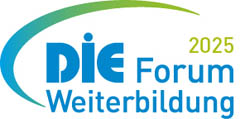A New Way of Presenting Educational Information
 Amsterdam (NL), November 2011 - The media industry is forging ahead in the development of compelling content, drawing on a fast-changing range of digital content tools. Jacob Molenaar, Advies en Projectleiding, The Netherlands, explains why the Semantic Web technology and information concepts promise to make heterogeneous information resources more easily accessible and where its would be expedient for presenting educational information.
Amsterdam (NL), November 2011 - The media industry is forging ahead in the development of compelling content, drawing on a fast-changing range of digital content tools. Jacob Molenaar, Advies en Projectleiding, The Netherlands, explains why the Semantic Web technology and information concepts promise to make heterogeneous information resources more easily accessible and where its would be expedient for presenting educational information.
Why should we use the Semantic Web for the presentation of educational information?
Jacob Molenaar: Modern education is an environment that has a very high information density. There is, of course, the formal curriculum that is expressed in long lists of learning goals and extensive annotations (curriculum specifications contain an enormous amount of expert knowledge and are based on many expert design decisions that are both explicit and implicit). Sometimes this basic curriculum is supplemented with extra curriculum specifications, for example math and language. The curriculum specifications are discussed in articles in professional journals that contain many valuable observations and discussions.
In many cases the subjects to be taught in the curriculum are also described in reference-book type of handbooks for teachers. Sometimes there are extensive curriculum-based assessment databases available for classroom use. And of course there are the textbooks and online resources that are used by the students for their learning.
All these information resources are structured and published independently of each other. If a teacher tries to construct an assessment from an assessment database and he wants to link this assessment to the curriculum, he has to use these two information resources next to each other. Of course there is the possibility of using hyperlinks when information resources are available online, but everybody knows that the world of hyperlinks is haunted by the phenomenon of broken links and that many links are not specific enough and therefore do not lead to the information you are looking for in one click.
Semantic Web technology and information concepts promise to make this type of heterogeneous information resource more easily accessible by linking the information together in a more intelligent way. Theoretically the Semantic Web can provide teachers with more powerful information tools, giving them comprehensive access to all the information they need.
Who needs it? Who will benefit from it?
Jacob Molenaar: Many people in education can benefit from Semantic Web technology. Curriculum designers can use the Semantic Web for creating more integrated curricula. Curricula can be compared to each other more effectively. Assessment developers can link their assessments more easily to the curriculum specifications. Publishers can use the semantic tools for designing their textbook contents structure and aligning it with the curriculum.
All of these experts can use the Semantic Web for adding metadata to their information that is more meaningful. But teachers, too, can benefit from the Semantic Web because it presents all the professional information they need for teaching their lessons in a more integrated and intelligent way.
In The Netherlands, for example, where there is a National Exam for Secondary Education, it would be possible to link the aggregated individual outcomes of these exams to the curriculum and to the textbooks that a specific school uses in its lessons. This would enable the teachers to find out where they could improve their teaching in order to prepare the students better for this National Exam.
What difference does the use of the Semantic Web make in presenting educational information?
Jacob Molenaar: The conceptual core of the Semantic Web is "Linked Data". All information is linked together and can therefore be presented in context. Educational information no longer has to be bulky, verbose, and confusing. It can be presented to the user in a personalized way, just enough for his specific need, while at the same time containing everything he needs from various information resources.
Is it something everyone can use or is there a specific audience?
Jacob Molenaar: Designing Linked Data is expert work not because it is technical but because it has to be done by people who are very familiar with the semantics of a certain information domain. Curriculum experts have to design and develop the Curriculum Web, for example. But once these core structures of Linked Data are in place, everybody can start using the Semantic Web. Ordinary teachers will benefit greatly from it. And what's more, everybody can start adding information to the Web, for example his own annotations or learning objects. In this way the Semantic Web of education will grow and grow and become stronger in its semantic richness every day.








